Last updated on
Discover effective ways to keep your couch looking fresh and free from unsightly pilling, maintaining its pristine appearance for years to come.
Have you ever noticed small balls of fuzz forming on your couch fabric after just a few uses? This pesky problem is called pilling, and it can make even the most beautiful couch look worn out and shabby. Luckily, there are steps you can take to prevent pilling from happening in the first place.
In this article, we’ll share some tips and tricks to help you keep your couch looking brand new for years to come. So grab a cup of coffee and let’s dive in!
Key takeaways:
- Identify fabric types for specific care.
- Causes of pilling: clothing friction, low-quality materials, improper care.
- Choose upholstery materials resistant to pilling.
- Consider fabric quality and durability.
- Regular maintenance: vacuuming, fabric softeners, throw blankets, grooming the surface.
Table of Contents
Identifying Fabric Types
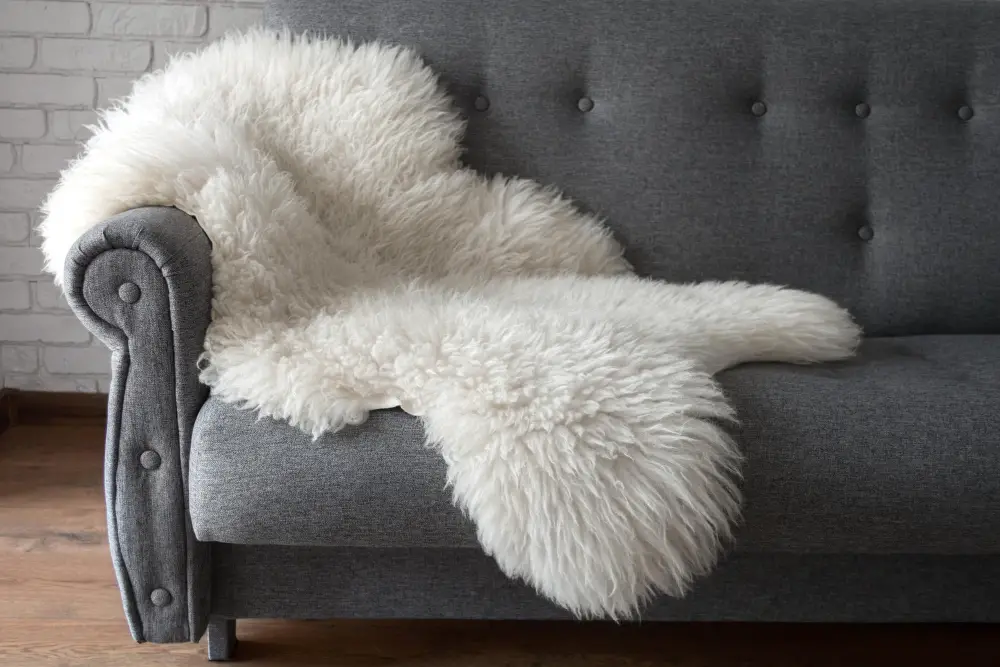
Identifying fabric types is crucial because each type has its own unique characteristics and requires specific care. Some common materials used for couches include cotton, linen, wool, polyester blends and microfiber.
Cotton is a natural fiber that is soft and breathable but can be prone to wrinkling if not cared for properly. Linen also falls under the category of natural fibers; it’s lightweight with a crisp texture but can easily wrinkle as well.
Wool is another popular choice due to its durability and warmth; however, it may require more maintenance than other fabrics due to its tendency towards shedding or matting over time.
Polyester blends are synthetic fibers that offer excellent resistance against wear-and-tear while being easy-to-clean at home using mild detergents or soap solutions. Microfiber offers similar benefits as polyester blends while providing an ultra-soft feel which makes them ideal for families with children or pets who spend lots of time lounging on their furniture.
Causes of Pilling
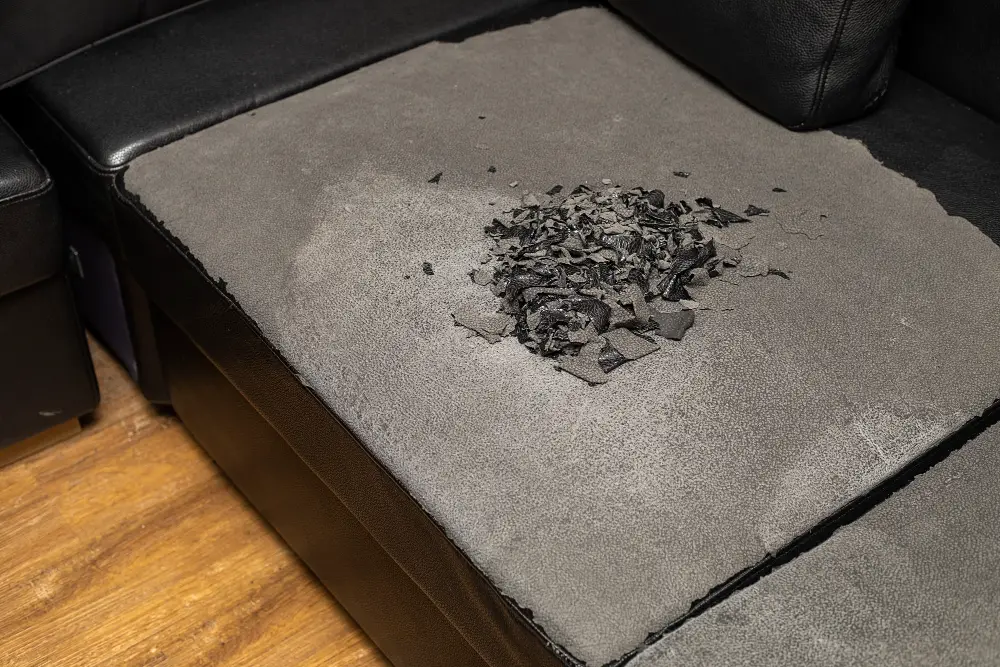
When we sit or lie down on a couch, our clothing rubs against the fabric, causing small fibers to loosen and form balls. This process can be exacerbated by rough fabrics or those with loose weaves that are more prone to snagging.
Another cause of pilling is low-quality materials. Cheaper fabrics tend to have shorter fibers that are more likely to break and pill over time compared to higher quality materials like wool or silk.
Improper care can also lead to increased pilling on your couch. Washing your couch cover too frequently in hot water or using harsh detergents can weaken the fabric’s integrity and make it more susceptible to damage.
Couch Material Selection

Some fabrics are more prone to pilling than others, so choosing the right one can make a significant difference in how long your couch stays looking new.
Natural fibers such as cotton and wool tend to pill more easily than synthetic materials like polyester or nylon. However, natural fibers also have their advantages when it comes to durability and comfort.
If you’re set on having a natural fiber couch but want to avoid excessive pilling, look for high-quality fabrics with tight weaves that are less likely to snag or fray. Synthetic blends that incorporate some natural fibers can also provide an excellent compromise between durability and softness while minimizing the risk of pilling.
Ultimately, selecting a fabric based solely on its resistance against piling may not be practical if other factors such as aesthetics or comfort take precedence in your decision-making process.
Analyzing Fabric Quality: Pilling Vs Durability
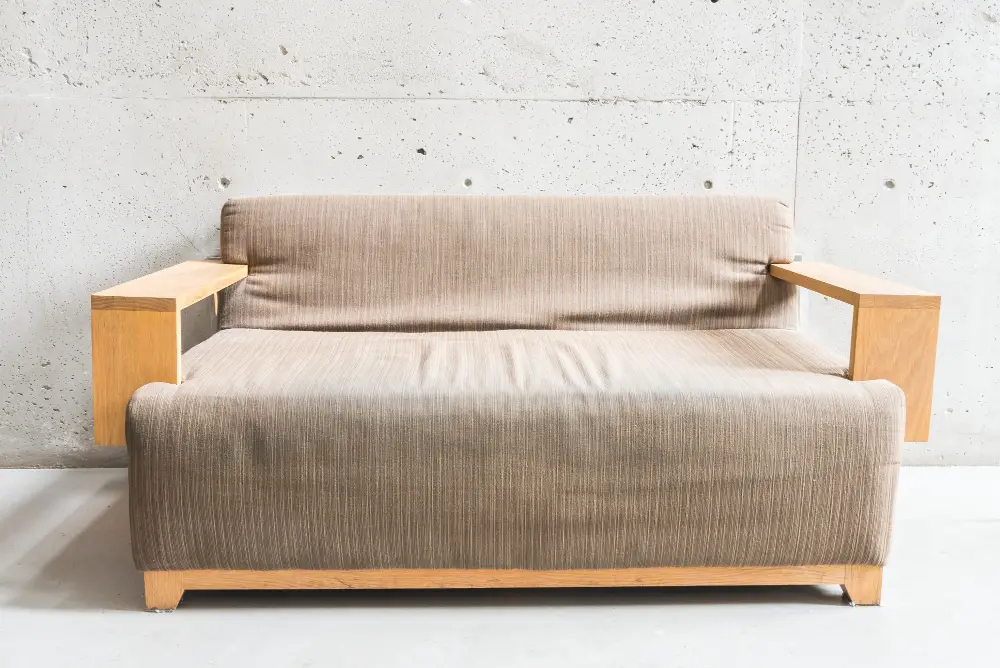
Some fabrics are more prone to pilling than others due to their construction and fiber content. However, just because a fabric pills easily doesn’t necessarily mean it’s not durable.
For example, wool and cashmere are known for their tendency to pill but they’re also incredibly strong fibers that can withstand years of use if cared for properly. On the other hand, synthetic fabrics like polyester may be less likely to pill but they may not hold up as well over time.
When selecting a couch material with durability in mind, consider factors such as thread count (the number of threads woven into each square inch), weave type (tighter weaves tend to be more durable), and fiber content (natural fibers like cotton or linen tend to wear better than synthetics).
It’s important not only look at how resistant a fabric is against pilling but also its overall durability when making your selection.
Comparing Natural and Synthetic Fabrics for Pilling Resistance
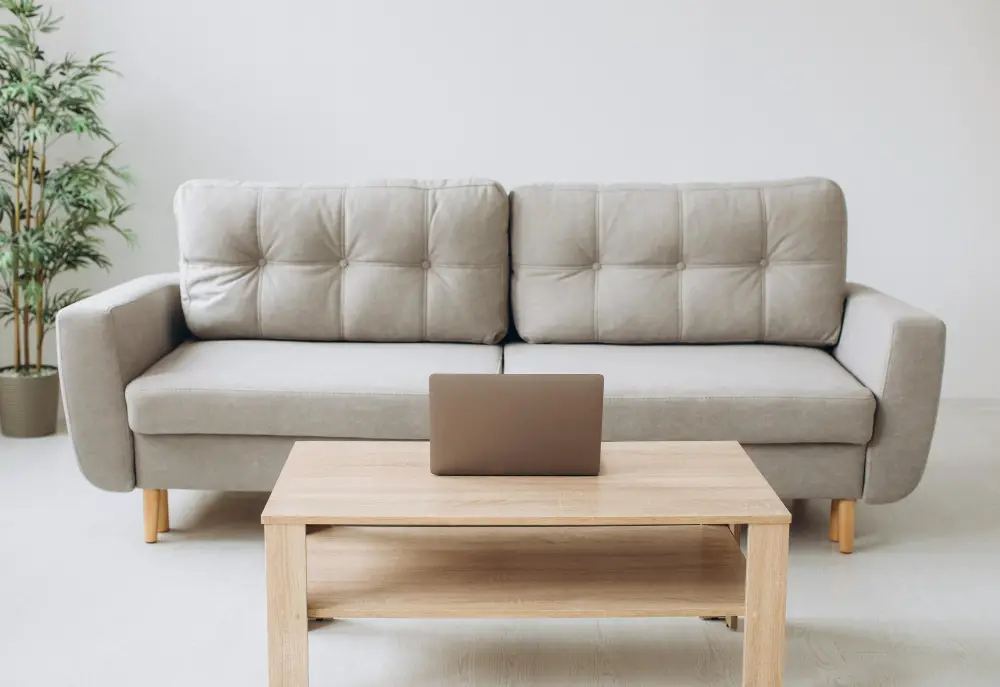
Natural fabrics like cotton, wool, and silk are known for their softness and breathability but may be more prone to pilling than synthetic materials. On the other hand, synthetic fabrics such as polyester or nylon tend to be more durable and resistant against pilling.
Polyester is a popular choice for upholstery because of its durability and resistance against stains. It’s also less likely to pill compared with natural fibers like cotton or wool.
Nylon is another great option that offers excellent abrasion resistance while being easy on maintenance.
While there are pros and cons associated with each type of fabric material used in couches today; ultimately it depends on personal preference when deciding which one will work best in your home decor scheme.
Proper Couch Maintenance to Prevent Pilling
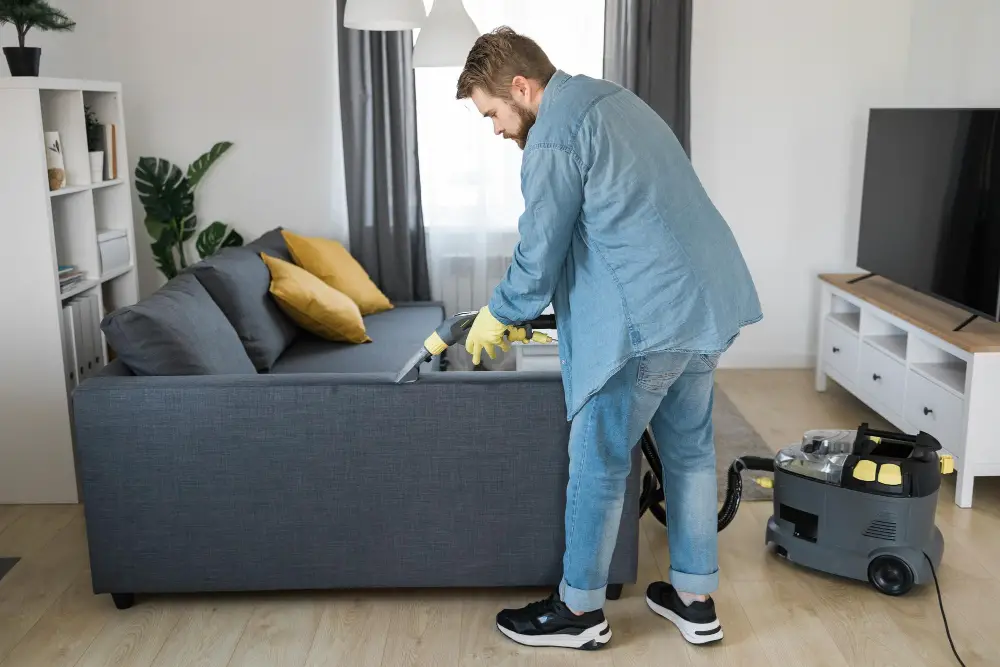
Regular cleaning and care can go a long way in keeping your couch looking new for years to come. One of the most important things you can do is vacuum your couch regularly using an upholstery attachment to remove any loose fibers or debris that could contribute to pilling.
Another effective method for preventing pilling is using fabric softeners when washing cushion covers or throws. Fabric softeners help reduce friction between fibers, which can cause them to break down and pill over time.
You may also want to consider implementing throw blankets on high-use areas of the couch such as armrests or seat cushions. This will not only add a decorative touch but also provide an extra layer of protection against wear and tear.
Lastly, grooming the surface of your couch with a lint roller or brush every few days will help remove any loose fibers before they have a chance to accumulate into pills.
Vacuuming Techniques
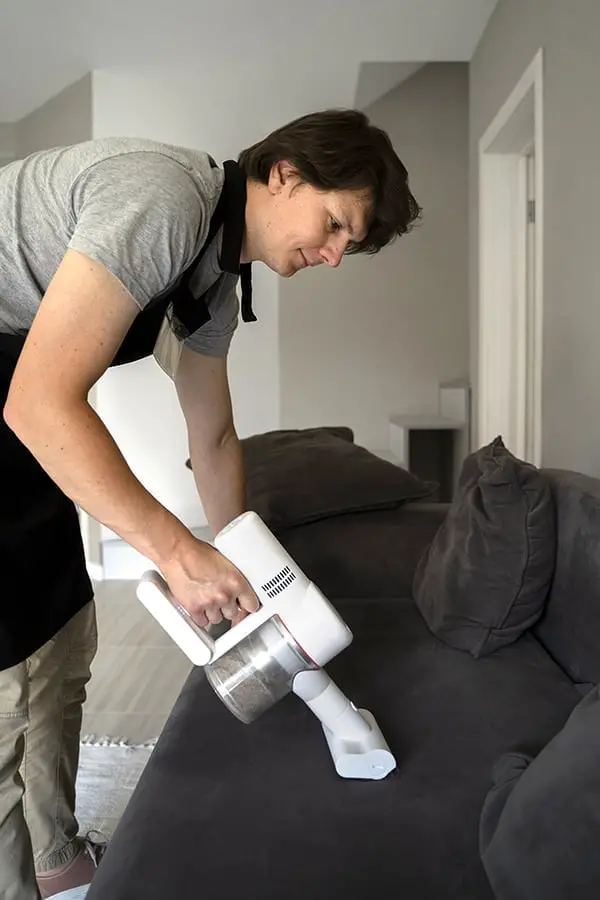
It’s important to use the right technique when vacuuming to avoid damaging the fabric. Start by using a soft brush attachment on your vacuum cleaner and gently run it over all surfaces of your couch, paying special attention to areas that receive high traffic or are prone to friction.
If you notice any loose fibers or fuzz balls forming during this process, stop immediately and use a lint roller or fabric shaver instead. These tools can help remove any pills without causing further damage.
It’s also important not to press too hard with the vacuum brush as this can cause abrasion on delicate fabrics like wool or silk. Instead, let the suction do its job and move slowly across each section until you’ve covered every inch of your couch.
Using Fabric Softeners
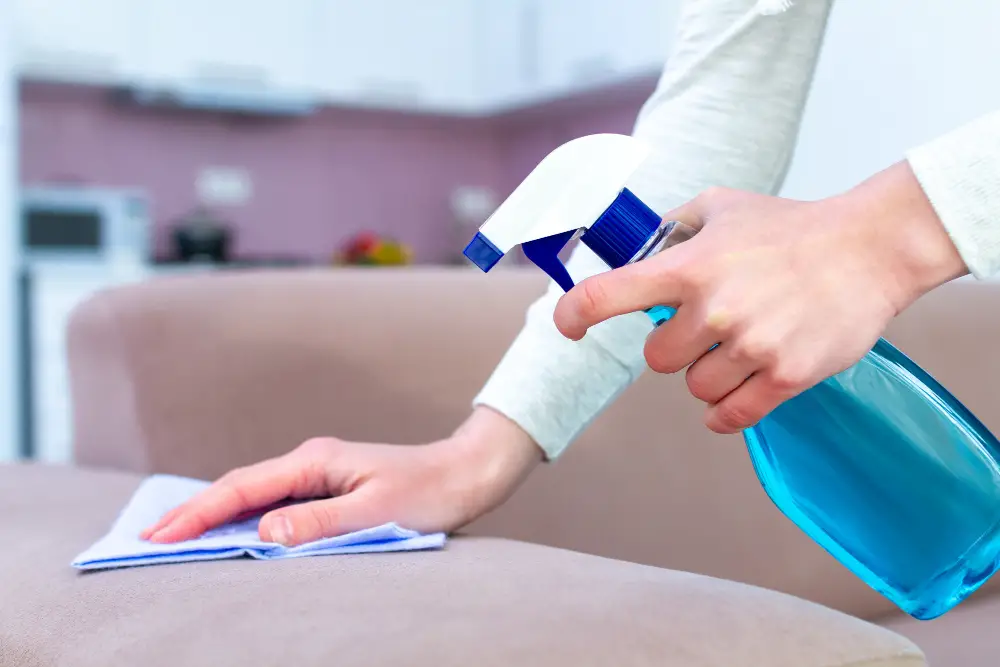
They work by coating the fibers of the fabric, making them less prone to friction and abrasion. This helps reduce the likelihood of pilling occurring over time.
When using fabric softener, it’s important to follow the manufacturer’s instructions carefully. Be sure not to use too much or too little product, as this can affect its effectiveness in preventing pilling.
It’s also worth noting that some fabrics may be more sensitive than others when it comes to fabric softener usage. For example, natural fabrics like cotton and linen may benefit from a gentle fabric conditioner while synthetic materials like polyester might require special care.
In addition to using traditional liquid or sheet-style fabric softeners, there are also eco-friendly options available such as wool dryer balls or vinegar-based solutions that can help prevent static cling without leaving any residue behind.
Implementing Throw Blankets
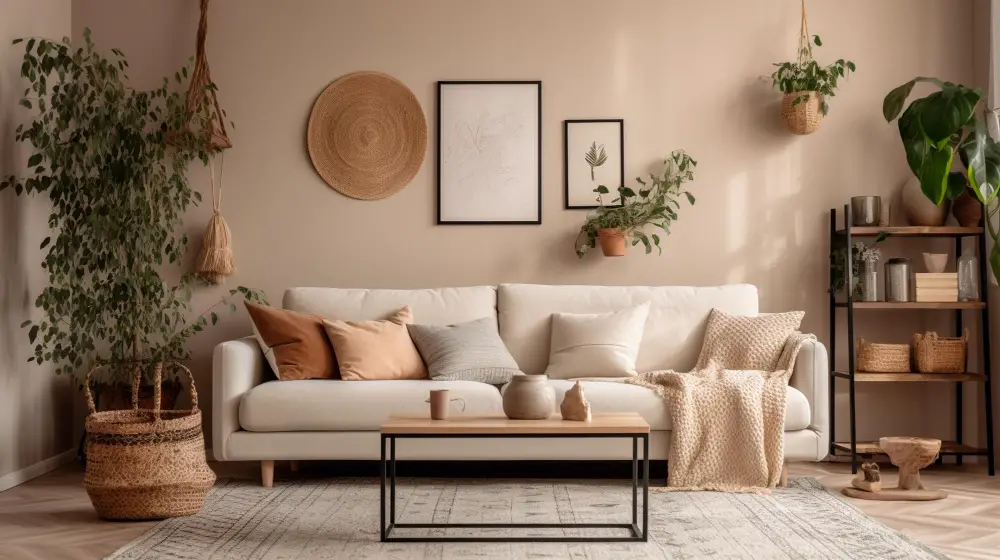
By draping a throw blanket over the surface of your couch, you can protect it from friction and wear caused by daily use. Plus, if you choose a high-quality throw made from natural fibers like wool or cotton, it will be less likely to shed or pill than synthetic materials.
To implement this strategy effectively, consider choosing throws that complement the color scheme of your living room decor. You can also switch out different throws throughout the year for seasonal variety.
When using throw blankets as an anti-pilling solution for your couch, make sure they are regularly washed according to their care instructions. This will help prevent any dirt or debris buildup on both the blanket and sofa fabric that could lead to pilling in the future.
Anti-Pilling Couch Covers
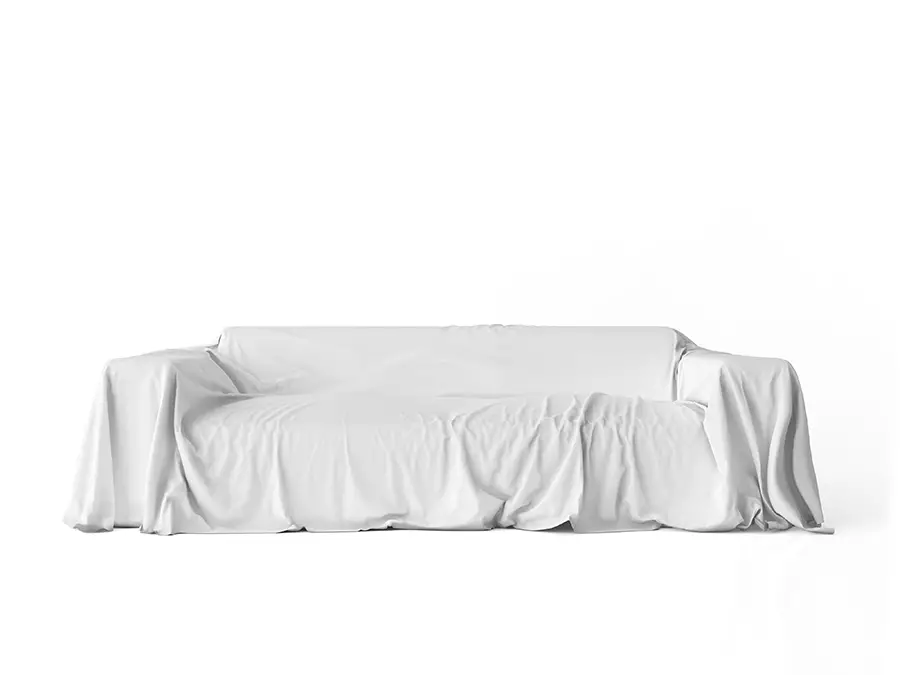
These covers are designed to protect your furniture from wear and tear, including pilling caused by regular use. They come in a variety of materials, colors, and sizes to fit any type of couch.
When selecting an anti-pilling cover for your sofa or loveseat, consider the material carefully. Look for high-quality fabrics that are durable and resistant to piling such as polyester blends or microfiber materials.
In addition to preventing piling on your furniture surface, these covers also offer other benefits like protecting against spills and stains while adding a decorative touch that can complement any room’s decor style.
Grooming Couch Surfaces
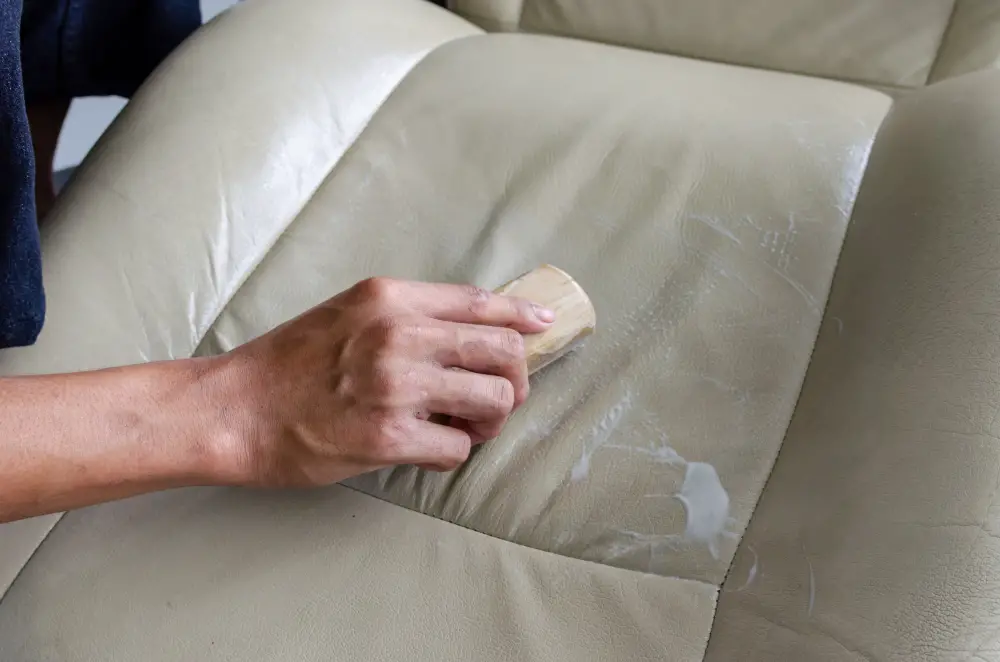
Regularly brushing or combing the surface of your couch can help remove any loose fibers that may cause pilling. You can use a soft-bristled brush or a lint roller to gently groom the fabric, making sure not to apply too much pressure as this could damage the material.
For fabrics with longer fibers such as wool, it’s best to use a wire pet brush instead of a regular one. This will help detangle and straighten out any twisted fibers that could lead to pilling.
Avoid sitting on your couch while wearing clothing made from rough materials like denim or corduroy. These fabrics are more likely to shed and transfer their fibers onto your furniture upholstery.
Utilizing Fabric Shavers
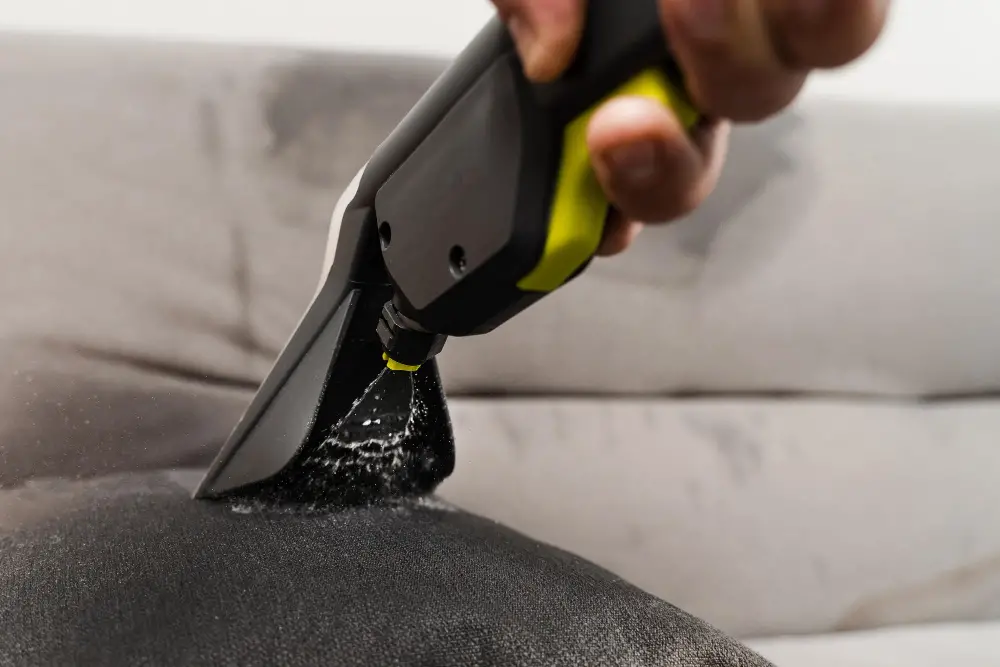
One of the most effective methods is by using a fabric shaver. These handy tools work by gently removing the fuzz balls from your couch’s surface, leaving it looking smooth and new again.
To use a fabric shaver, simply run it over the affected areas in a circular motion until all of the pills have been removed. Be sure to follow any instructions that come with your specific model for best results.
It’s important to note that while fabric shavers can be incredibly helpful in restoring an older couch, they should not be used as a substitute for proper maintenance and prevention techniques. Regularly vacuuming and grooming your couch will go a long way in preventing pilling from occurring in the first place.
If you’re considering purchasing new furniture or reupholstering an existing piece, look for fabrics that are specifically designed with anti-pilling properties or those made from high-quality materials known for their durability against wear-and-tear over time.
Benefits of Fabric Sprays
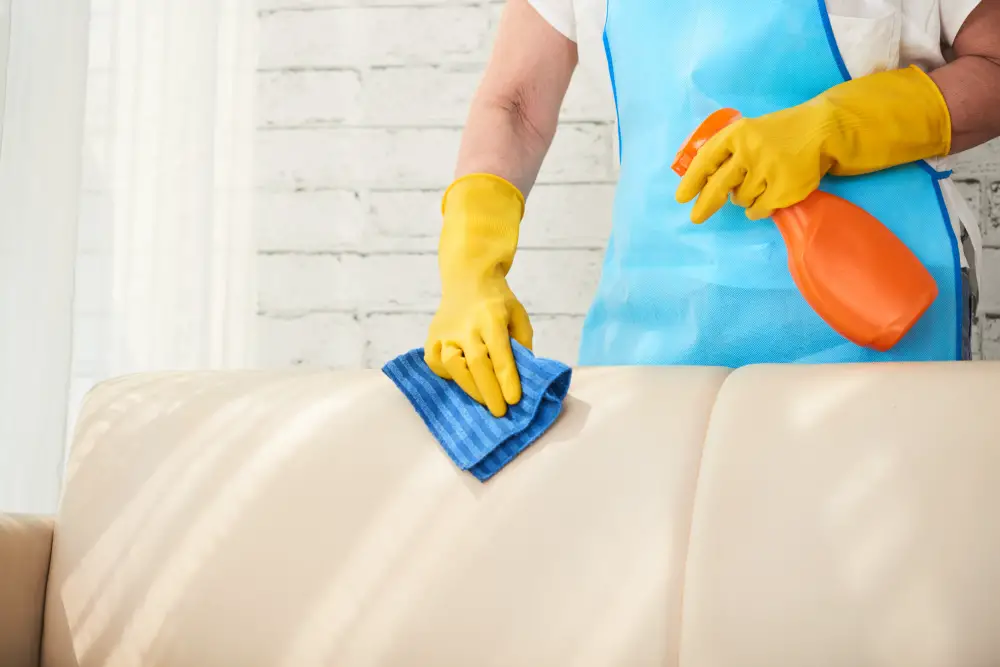
These sprays work by creating a protective barrier on the surface of the fabric, preventing dirt, dust, and other particles from settling in. They also help to repel liquids and stains, making it easier to clean up spills before they have a chance to set in.
One of the biggest benefits of using fabric sprays is that they can help prevent pilling. By keeping your couch free from debris and other particles that can cause friction against the fabric fibers, you’ll be able to reduce wear-and-tear over time.
Another advantage is that these products often come with pleasant scents or odor-neutralizing properties which will leave your furniture smelling fresh for longer periods between washes or deep cleaning sessions.
When shopping for fabric spray products specifically designed for upholstery use make sure you read labels carefully as some may contain harsh chemicals which could damage certain types of fabrics such as leather or suede.
Regular Couch Inspection

This will help you identify any potential issues before they become major problems. During your inspection, look for signs of wear and tear, loose threads or fibers, and areas where pilling has already started to occur.
If you notice any issues during your inspection, take action immediately. Trim off any loose threads or fibers with a pair of scissors before they have a chance to contribute to more significant damage.
You can also use fabric shavers or lint rollers as part of your maintenance routine.
Educating Family Members

Teach them not to jump or bounce on the furniture, as this can cause unnecessary friction and wear down the fabric. Encourage them to remove sharp objects from their pockets before sitting down, as these can snag and damage delicate fabrics.
It’s important to establish rules around eating and drinking near the couch. Spills are a common cause of stains that can lead to pilling over time if left untreated.
Make sure everyone knows how important it is to clean up spills immediately using a damp cloth or paper towel.
Professional Upholstery Cleaning
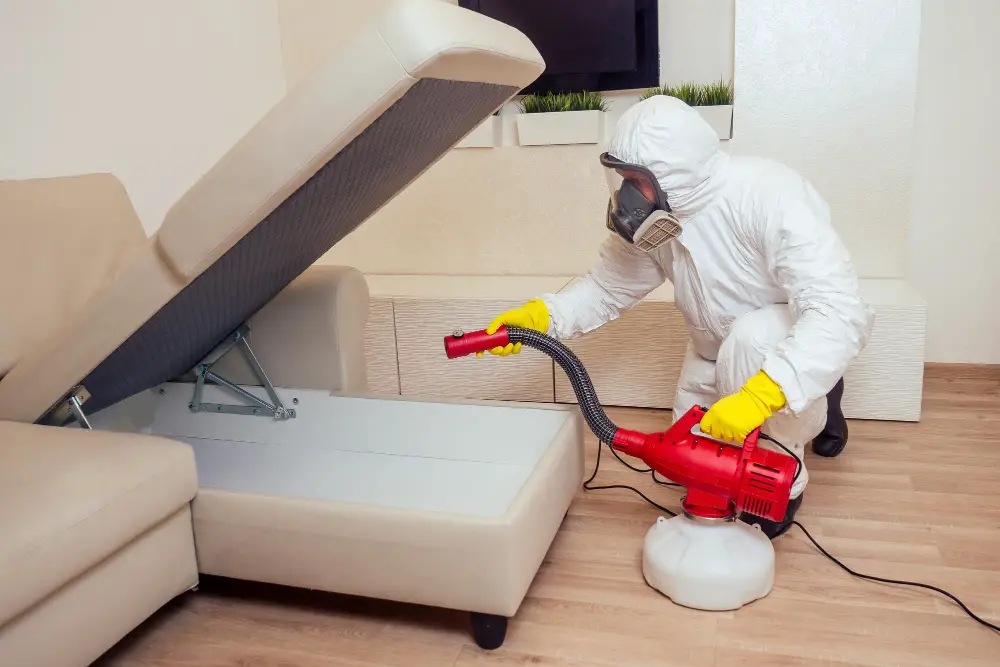
Professional upholstery cleaning services have specialized equipment and techniques that can remove dirt, dust, and other debris from deep within the fibers of your couch fabric. This not only helps prevent pilling but also extends the life of your furniture.
When choosing an upholstery cleaning service provider, be sure to do some research beforehand. Look for companies with good reviews and ratings from previous customers.
Make sure they use safe and effective cleaning products that won’t damage or discolor your couch fabric.
It’s recommended to have professional upholstery cleaning done at least once every 12-18 months depending on usage frequency as well as if you notice any signs of wear or tear such as fading color or fraying edges.
Couch Fabric Warranties and Pilling Coverage

Some companies offer warranties that cover pilling for a certain period of time after purchase. This can give you peace of mind knowing that if your couch does develop unsightly pills, you’ll be able to have it repaired or replaced at no additional cost.
It’s important to read through the warranty carefully before making your purchase so that you understand exactly what is covered and what isn’t. Some warranties may only cover certain types of fabric or specific causes of damage.
If your current couch is still under warranty and has developed pilling issues, be sure to contact the manufacturer as soon as possible. They may require documentation such as photos or receipts in order to process your claim.
Couch Replacement Considerations

When shopping for a new couch, keep in mind that not all fabrics are created equal when it comes to pilling resistance. Look for materials like leather or microfiber that are less prone to pilling than natural fibers like cotton or wool.
Consider investing in higher quality furniture with durable frames and cushions that will hold up over time. While cheaper options may seem appealing at first glance, they often use lower quality materials that can wear down quickly.
Don’t forget about maintenance when purchasing a new couch. Regular cleaning and upkeep can go a long way in preventing pilling from occurring on your new piece of furniture.
FAQ
Why does my couch keep pilling?
Your couch keeps pilling due to normal wear and tear, which leads to the release of excess loose fibers that eventually get removed.
Does Scotchgard stop pilling?
Scotchgard slows down the pilling process by lowering friction on the fabric, but it does not completely stop it.
Can pilling be prevented?
Pilling can be prevented by using enzyme-based detergents, a gentle wash cycle, and adding fabric softener to smooth out fabric fibers and reduce knot formation.
What are the best fabrics for a couch to avoid pilling?
The best fabrics for a couch to avoid pilling are tightly woven synthetic fabrics, like polyester and nylon, or natural materials like leather and velvet.
How can I remove existing pilling from my couch effectively?
To effectively remove existing pilling from your couch, use a fabric shaver or gently sweep a pumice stone across the surface.
Are there any specific maintenance practices to reduce pilling on couches?
To reduce pilling on couches, specific maintenance practices include regularly vacuuming, rotating cushions, and using a fabric shaver or pill remover.




